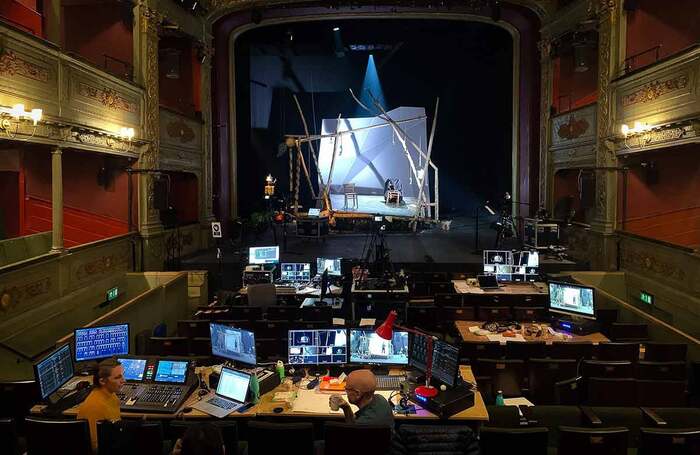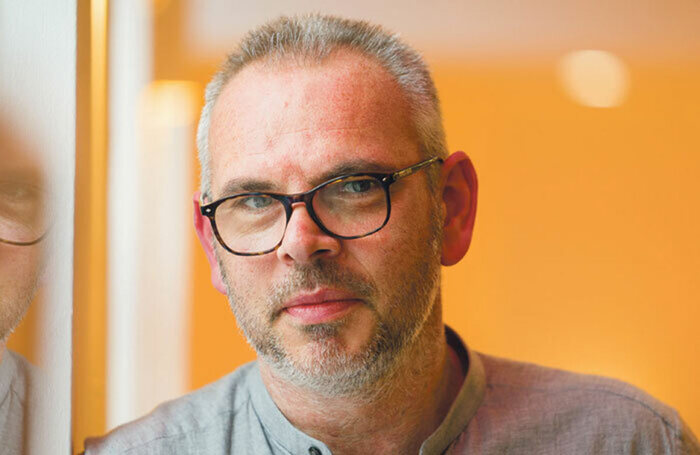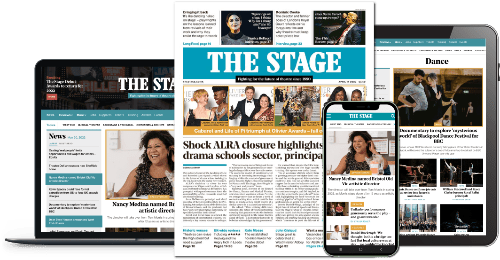Digital allows people to return to theatre
When theatres shut during the first lockdown, many found innovative ways to create online content for eager audiences. The problem was how to monetise these often small-scale offerings to provide the revenue streams that were vital for survival. Sound designer Simon Baker turned to TicketCo for the solution
It’s one of the most profound changes the world of theatre has seen in centuries, and it all started in a teenager’s bedroom.
Near the beginning of 2020, with his children at home and sticking mainly to their rooms, sound designer Simon Baker noticed that his son was hooked on watching Twitch, where people live-stream themselves playing video games.
Lockdown had just started and the company Baker was working with – Emma Rice’s acclaimed Wise Children – was looking for ways to continue its work in a different way.
Baker says: “He was watching people play Fortnite and Minecraft and I would watch with him. These people were getting huge traction, attracting massive communities and, although they were low-budget, the production values were really high. Everybody shot in HD, the sound was good. It wasn’t expensive – you could just order the kit online. It felt a bit like my early days in pirate radio. I thought, ‘we could do that with theatre’.”
Drawing on his experience as an acclaimed sound designer – he won an Olivier award in 2012 for Matilda the Musical – Baker started a series of live podcasts and video diaries for Wise Children, featuring clips from rehearsals of the show it had been forced to cancel, as well as other glimpses into the company’s work. Rice broadcast from her home and people were hooked. “It was cheap, it was simple, and it was pretty successful,” he says.
Soon, that blossomed into something bigger. One of Baker’s former colleagues, Matthew Warchus, artistic director of the Old Vic in London, asked him to help stream the Old Vic’s acclaimed production of Lungs, featuring Claire Foy and Matt Smith. “It didn’t seem like a huge leap from the podcasts – just a few more cameras.” He managed to capture the show and broadcast it to audiences, kickstarting the Old Vic’s In Camera series.
A live stream of Wise Children’s hit musical Romantics Anonymous quickly followed, innovatively marketed as a ‘digital tour’, where 34 partner theatres each sold tickets for different nights. Through successive lockdowns and Covid-related setbacks, Baker’s efforts set the template for two years of incredibly exciting digital work as theatre organisations across the country found ways to turn formerly in-person events into thrilling digital encounters. What’s more, he adds, live streams are here to stay.
“I saw a problem”, he says simply, “and looked for a solution.”
Baker is adamant that the power of live streaming is manifold: it provides an extra revenue stream for theatres, increases access, and pushes the theatrical form forward. “I don’t see live streaming as replacing or diminishing the live theatre experience. We’re expanding the world.”
It adds another way for theatres and organisations to connect to their communities, providing access to audiences who would otherwise be restricted for travel, health or financial reasons. It can also be an extremely powerful educational tool, with streamed performances becoming a resource for schools, care homes or other groups who would benefit from a theatre experience but face logistical challenges in physically attending.
But was there a steep learning curve in setting up and harnessing that technology? “Not as big a leap as I thought there would be. We’re used to dealing with technology in theatre, whether that’s lighting or sound desks. We’re good at learning and adapting.”
Continues...
There is a lingering impression that digital work is expensive work. Baker’s efforts throughout the last two years have proved that’s not the case. In fact, hybrid work has become a vital revenue stream for organisations. There’s huge flexibility in terms of how much organisations choose to spend on equipment. “A really high-quality camera is about £1,000. Then you need something to mix the various camera shots together, and a decent vision mixer is about £400. You need something to take the video signal and send it out onto the internet. And that’s about it. Theatres can spend as much or as little as they want on kit.” That outlay is made up by the revenue tickets bring in.
Nor does the revenue stream end when the live broadcast is over. There are more streaming services than ever, from Neftlix and Amazon, which have been increasingly moving into filmed live offerings, to more specialist platforms like Marquee and National Theatre at Home. They are hungry for content. There is no need for that beautifully captured 4K performance to gather dust and languish in a server somewhere.
The biggest problem Baker encountered in the early days of his forays into live streaming was not to do with equipment, cost, the worry about losing any kind of essential element of the live theatre experience, or learning to use the kit effectively. It was actually finding a way to sell tickets and host the video stream online.
“There are lots of streaming providers online such as Twitch, Vimeo, YouTube and Facebook. You can easily set up a camera to broadcast through one of those in around 10 minutes, and most don’t have an upfront cost. The problem is that if you want to monetise your performances, none of them have a ticketing option.”
Baker realised that sporting events have been ticketing live streams for some time, so there must be a fairly simple, readymade solution. But when he started talking to pay-per-view channels, they were used to dealing with far greater numbers than a live-streamed theatre performance. They also often asked users to subscribe to a service. There seemed to be no ticketing and streaming service that suited the needs and scale of theatre.
“I just wanted people to be able to put in their email address and payment details, get sent a link and click on it when the performance started. I also wanted them to be able to watch it in different ways, not just on a computer. So I searched around and came across a company called TicketCo.”
The Scandinavian company had recently launched a service that sounded close to Baker’s requirements. He got in touch with them and, together, they tested and perfected a ticketing and streaming system for live theatre performances.
“Having spent a lot of time talking to salespeople at large tech companies, who were selling a product and didn’t really know the details, it was great to actually be in conversation with the people at TicketCo who were developing the service. If I had a problem or a suggestion I could pick up the phone and tell them, and they would fix it.”
TicketCo now works with more than 20 theatres, helping to bring live streams into tens of thousands of homes across the world. Besides their presence in Norway, Sweden and the UK they recently launched in America and at the Event Technology Awards in London in October 2021 TicketCo were awarded both Best Payments Platform and Best Pivot from Physical to Virtual.
Since watching Twitch in his son’s bedroom in 2020, theatre has changed profoundly, Baker reckons. “Now, whenever we announce a new show, the first thing we get asked on social media is if there will be a live stream? People give many reasons: ’I don’t live nearby’ or ’my elderly mother can’t get out’, whatever it may be. Digital allows people to return to theatre.”
Covid is still affecting theatre badly, but even when its effects are less keenly felt, Baker thinks live-streamed work will be fundamental to theatre’s future. “It has been an exciting time. It has put a spotlight on what digital can do in terms of access, delivery, communication with theatres and audiences. I don’t think we can really go back now – and I don’t think we should.”
The Big Idea
The Big Idea
Most Read
Across The Stage this weekYour subscription helps ensure our journalism can continue
Invest in The Stage today with a subscription starting at just £5.99





